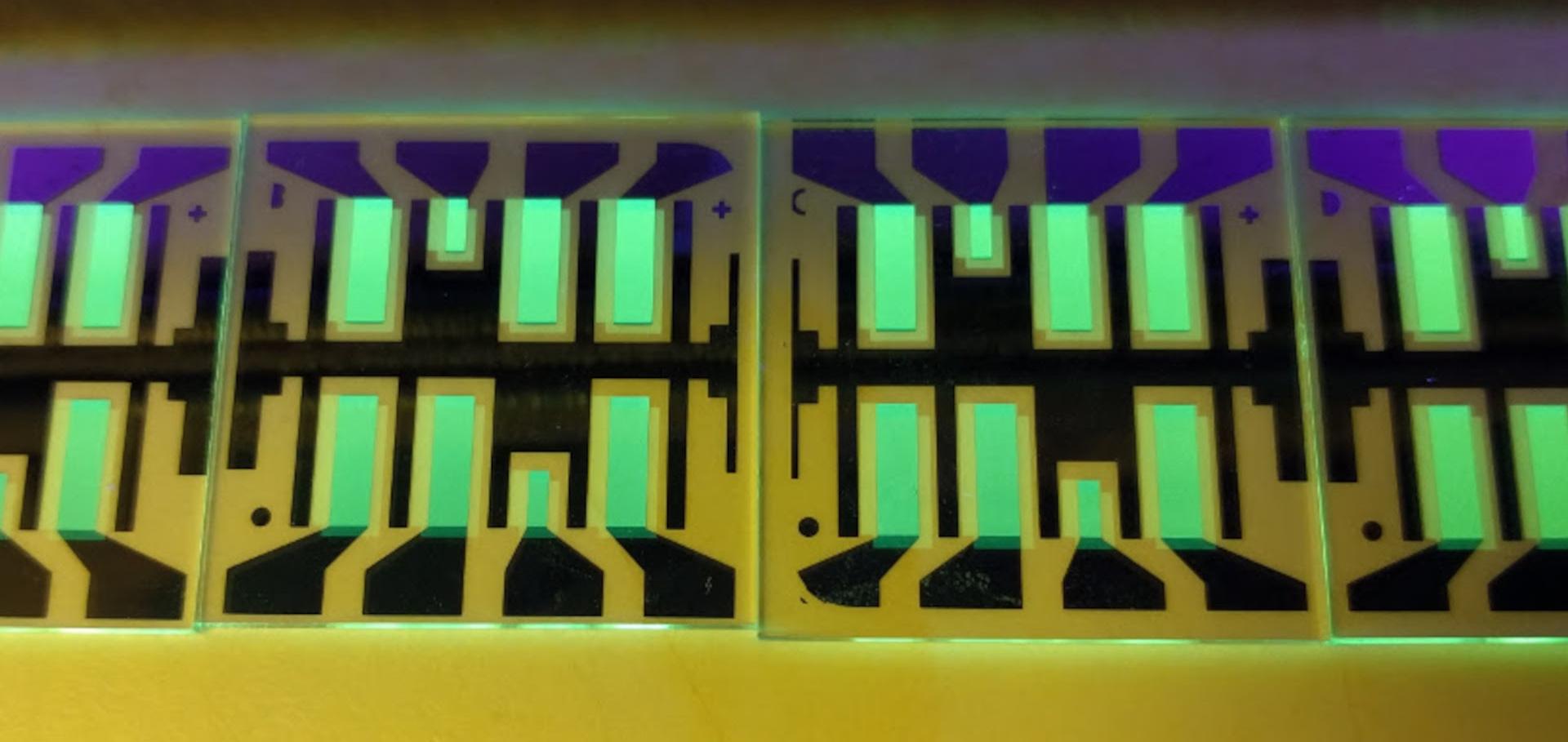Open-circuit voltage and effective gap of organic solar cells
Advanced Functional Materials 23:46 (2013) 5814-5821
Abstract:
The open-circuit voltage (VOC) of an organic solar cell is limited by the donor-acceptor material system. The effective gap E geff between the electron affinity of the acceptor and the ionization potential of the donor is usually regarded as the upper limit for VOC, which is only reached for T → 0 K. This relation is confirmed for a number of small-molecule bulk heterojunction p-i-n type solar cells by varying the temperature and illumination intensity. With high precision, the low temperature limit of VOC is identical to E geff. Furthermore, the influence of the hole transport material in a p-doped hole transport layer and the donor-acceptor mixing ratio on this limit V0 is found to be negligible. Varying the active material system, the quantitative relation between V0 and E geff is found to be identity. A comparison of V 0 in a series of nine different donor-acceptor material combinations opens a pathway to quantitatively determine the ionization potential of a donor material or the electron affinity of an acceptor material. The effective gap of a photovoltaic donor-acceptor system equals the open-circuit voltage extrapolated to temperature zero. The extrapolation is independent of the illumination intensity, and material variations in the doped transport layers do not affect the measurement result. This is shown for bulk-heterojunction devices with different mixing ratios and with small-molecular materials from various classes. Copyright © 2013 WILEY-VCH Verlag GmbH & Co. KGaA, Weinheim.Temperature dependent behavior of flat and bulk heterojunction organic solar cells
Materials Research Society Symposium Proceedings 1493 (2013) 269-273
Abstract:
The open-circuit voltage of an organic solar cell is increasing with decreasing temperature and with increasing illumination intensity. These dependencies are quantitatively investigated for two types of organic solar cells, one with a flat donor-acceptor heterojunction and one with a mixed layer bulk heterojunction. Zinc-phthalocyanine and C60 are used as donor and acceptor, respectively. A qualitative difference is found for the two geometries. We find that a logarithmic illumination intensity dependence with temperature as a linear pre-factor of the logarithm, which is commonly reported and observed, is applicable for the bulk heterojunction. The flat heterojunction, in contrast, shows a constant illumination intensity pre-factor which is independent of the temperature, and the temperature can be modeled as additional linear summand. © 2013 Materials Research Society.Efficient charge generation by relaxed charge-transfer states at organic interfaces
Nature Materials (2013)
Abstract:
Interfaces between organic electron-donating (D) and electron-accepting (A) materials have the ability to generate charge carriers on illumination. Efficient organic solar cells require a high yield for this process, combined with a minimum of energy losses. Here, we investigate the role of the lowest energy emissive interfacial charge-transfer state (CT) in the charge generation process. We measure the quantum yield and the electric field dependence of charge generation on excitation of the charge-transfer (CT) state manifold via weakly allowed, low-energy optical transitions. For a wide range of photovoltaic devices based on polymer:fullerene, small-molecule:C and polymer:polymer blends, our study reveals that the internal quantum efficiency (IQE) is essentially independent of whether or not D, A or CT states with an energy higher than that of CT are excited. The best materials systems show an IQE higher than 90% without the need for excess electronic or vibrational energy.A top-down analysis: Determining photovoltaics R&D investments from patent analysis and R&D headcount
Energy Policy 62 (2013) 1570-1580
Abstract:
For alternative energy technologies like photovoltaics (PV), the analysis of Research and Development (R&D) expenses is important to observe and understand market dynamics. This is, in turn, essential for policymakers. However, the quantitative evaluation of global corporate R&D investments is a challenging task due to unavailability or high scatter of precise data. Here we present a top-down approach to estimate the current and global historic cumulated PV R&D investments based on international PV patent applications. High growth rates of PV-related patents and R&D headcount accompany growth and development of the PV market and are an excellent indicator to analyze R&D investments. With this approach, current annual corporate PV R&D investments are found to be about 6000. m€ and show a rapidly increasing trend on a global scale. © 2013 Elsevier Ltd.Investigating local (photo-)current and structure of ZnPc: C60 bulk-heterojunctions
Organic Electronics: physics, materials, applications 14:11 (2013) 2777-2788


